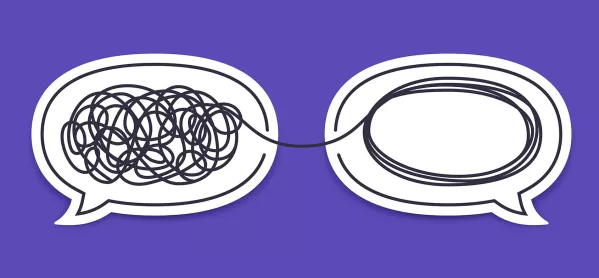Thousands of pupils seek counselling support in Scotland

New Scottish government figures show that over 12,000 children and young people accessed school counselling services in the final six months of last year, including 86 children in the early stages of primary school.
The figures show that, in total, 12,149 pupils sought help from school counsellors from July to December 2021 following the Scottish government’s commitment to provide a counsellor for students at every secondary in the country.
A total of 85 different reasons were given for pupils seeking support, with over 400 young people seeking help because they were suicidal or having suicidal thoughts.
The data, published by the Scottish government, also shows that pupils in S3 and S4 were the most likely to seek help; that girls were far more likely to access school counselling services than boys; and that the majority of children and young people accessed the counselling in-person, as opposed to virtually.
The report says the wide range of reasons for referrals “confirms that young people are dealing with a wide range of concerns within their lives and continues to demonstrate the need for young people to be able to access support quickly and effectively for their mental health and wellbeing”.
It adds that overall the “picture on improving children and young people’s outcomes is positive”.
The report states: “It is clear that 4,350 children and young people have improved outcomes as a result of receiving counselling. Where outcomes have been provided in percentage terms, they range from 88 per cent to 100 per cent of children and young people having reported improved outcomes.”
According to the report, there were more girls (7,573) than boys (3,942) recorded as accessing counselling provisions, with 404 young people who accessed counselling services not identifying as male or female, or preferring not to specify their gender.
The report says: “For those local authorities who provided a breakdown of pupils by year group, the two year groups with the highest total number of service users were S3 and S4.”
In total, 2,217 S3 students accessed school counselling services and 2,097 S4 students did so. The number of S2 students accessing counselling was 2,015.
Primary pupils were less likely to access counselling services but the figures show that as young people progress through school the number seeking help rises steadily, before dropping off again after peaking in S3.
In total 86 pupils from P1-4 accessed counselling; 34 from P5; 712 from P6; and 1,019 from P7.
In secondary 1,245 students from S1 accessed counselling; 2,015 from S2; 2,217 from S3; 2,097 from S4; 1,278 from S5; and 765 from S6.
Previous figures for January to June 2021 showed that 10,029 young people accessed school counselling services. Again, more girls than boys were recorded as seeking help, and pupils in S3 and S4 were most likely to seek help.
- Background: Scotland aims for counselling in every secondary
- Related: School counsellor target ‘was missed then hidden’
- News: ‘School counsellors alone cannot address pupils’ needs’
The Scottish government set itself the goal of recruiting 350 counsellors, or one for every secondary school in Scotland, by September 2020 but then pushed the commitment back to the end of October that year.
However, information uncovered by the Scottish Liberal Democrats showed that by December 2020 over 100 counsellors were still missing from schools.
Speaking in the Scottish Parliament in June this year, education secretary Shirley-Anne Somerville said that all 32 local authorities had “confirmed that counselling services are in place across Scotland” - but that there was “variation in how the services are being delivered”, with some councils “providing a specific resource in schools, while others are providing an authority-wide service according to needs across the region”.
The new figures, published by the Scottish government on Thursday of last week, are an early indication of the level of demand for school counselling services, and of the reasons pupils give for needing support.
However, authorities collect data on engagement with school counselling services in different ways. For example, not all of them break down their figures by year group, or indicate if services are being delivered in-person or online. They also evaluate impact differently.
Based on the data published by the government, it is also impossible to ascertain the most common reasons for young people seeking help.
The government provided 10 suggested categories to councils under which children and young people may present for counselling, including exam stress, trauma, bereavement, gender identity, substance use, self-harm, depression, anxiety, emotional/behavioural difficulties and body image.
However, for these 10 categories, there are no figures on how often these issues have been cited as the reason for seeking help.
For the 75 further reasons for accessing services recorded by councils, these figures are provided.
These figures show that “suicidal or suicide ideation” was the reason for presenting for counselling on 428 occasions from July to December last year. The most common reason for accessing counselling was family issues, which was raised on 1,894 occasions, followed by relationships (1,377); self-esteem (915); and anger (520).
It is, of course, possible though that self-harm or depression or exam stress are more common reasons for seeking help. However, information on these factors is not included in the report.
You need a Tes subscription to read this article
Subscribe now to read this article and get other subscriber-only content:
- Unlimited access to all Tes magazine content
- Exclusive subscriber-only stories
- Award-winning email newsletters
Already a subscriber? Log in
You need a subscription to read this article
Subscribe now to read this article and get other subscriber-only content, including:
- Unlimited access to all Tes magazine content
- Exclusive subscriber-only stories
- Award-winning email newsletters
topics in this article



